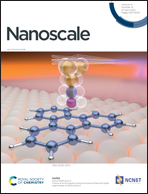Quantum emitters and detectors based on 2D van der Waals materials
Abstract
Light plays an essential role in our world, with several technologies relying on it. Photons will also play an important role in the emerging quantum technologies, which are primed to have a transformative effect on our society. The development of single-photon sources and ultra-sensitive photon detectors is crucial. Solid-state emitters are being heavily pursued for developing truly single-photon sources for scalable technology. On the detectors’ side, the main challenge lies in inventing sensitive detectors operating at sub-optical frequencies. This review highlights the promising research being conducted for the development of quantum emitters and detectors based on two-dimensional van der Waals (2D-vdW) materials. Several 2D-vdW materials, from canonical graphene to transition metal dichalcogenides and their heterostructures, have generated a lot of excitement due to their tunable emission and detection properties. The recent developments in the creation, fabrication and control of quantum emitters hosted by 2D-vdW materials and their potential applications in integrated photonic devices are discussed. Furthermore, the progress in enhancing the photon-counting potential of 2D material-based detectors, viz. 2D photodetectors, bolometers and superconducting single-photon detectors functioning at various wavelengths is also reported.

- This article is part of the themed collection: Recent Review Articles


 Please wait while we load your content...
Please wait while we load your content...